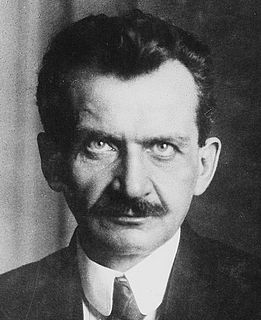
The politics of Austria take place in the framework of the federal parliamentary republic of Austria, with a President as head of state, and a Chancellor as the head of government. Governments, both local and federal, exercise executive power. Federal legislative power is vested both in the Federal Government and in the two chambers of Parliament; the National Council and the Federal Council. The Judiciary of Austria is independent of the executive and the legislature.

Early parliamentary elections were held in Austria on 24 November 2002, after internal divisions in the Freedom Party of Austria (FPÖ) culminating in the Knittelfeld Putsch led to the resignation of several leading FPÖ members. The result was a victory for the ÖVP, which won 79 of the 183 seats, the first time it had been the largest party in the National Council since 1966. It continued its coalition government with the FPÖ, which had lost almost two-thirds of its seats. Voter turnout was 84.3%.

Parliamentary elections were held in Austria on 3 October 1999.

Parliamentary elections were held in Austria on 9 October 1994. The Social Democratic Party won the most seats, and retained the grand coalition with the Austrian People's Party. Voter turnout was 81.9%.

Parliamentary elections were held in Austria on 7 October 1990. The Social Democratic Party won the most seats, and retained the grand coalition with the Austrian People's Party. Voter turnout was 86.1%.

Early parliamentary elections were held in Austria on 23 November 1986. They were called by Chancellor Franz Vranitzky of the Socialist Party (SPÖ), as he was not prepared to continue the coalition government with new Freedom Party leader Jörg Haider, who had ousted Norbert Steger at the party convention.

Parliamentary elections were held in Austria on 24 April 1983. The result was a victory for the Socialist Party, which won 90 of the 183 seats. However, the Socialists lost the outright majority they had held since 1971, prompting Bruno Kreisky to stand down as SPÖ leader and Chancellor in favour of Fred Sinowatz. The SPÖ stayed in office by entering into a coalition government with the Freedom Party of Austria, which at this point was a liberal party. Voter turnout was 92.6%.

Parliamentary elections were held in Austria on 6 May 1979. The Socialist Party won a fourth term in government, taking 95 of the 183 seats. Voter turnout was 92.2%. As of the 2017 elections, this is the most seats that an Austrian party has won in a free election.

Early parliamentary elections were held in Austria on 10 October 1971, following electoral reforms which increased the number of seats in the National Council from 165 to 183 and increased the proportionality of the seat distribution. The result was a victory for the Socialist Party, which won 93 of the 183 seats, an absolute majority. Voter turnout was 92.4%. Socialist leader Bruno Kreisky remained Chancellor.

Parliamentary elections were held in Austria on 1 March 1970. The result was a victory for the Socialist Party, which won 81 of the 165 seats to become the largest party for the first time in the Second Republic, only two seats short of a majority. Bruno Kreisky of the Social Democrats became Chancellor at the head of a minority government that was tolerated by the Freedom Party of Austria in return for electoral reform that favoured smaller parties. Voter turnout was 91.8%. It was the first Socialist-led government since 1920, and the first purely left-wing government in Austrian history.

Parliamentary elections were held in Austria on 6 March 1966. The result was a victory for the Austrian People's Party (ÖVP), which won 85 of the 165 seats. Voter turnout was 93.8%. With an outright majority of three seats, the ÖVP could govern alone. Nonetheless, ÖVP leader and Chancellor Josef Klaus initially sought to continue the grand coalition with the Social Democratic Party of Austria (SPÖ) that had governed since 1945. When talks for a renewed coalition failed, Klaus formed an exclusively ÖVP cabinet, the first one-party government of the Second Republic. It was also the first purely centre-right government in Austria since before World War II.

Parliamentary elections were held in Austria on 18 November 1962. The result was a victory for the Austrian People's Party, which won 81 of the 165 seats. Voter turnout was 93.8%. Although the People's Party had come up only two seats short of an outright majority, Chancellor Alfons Gorbach retained the grand coalition with the Socialists under Vice-Chancellor Bruno Pittermann.

Parliamentary elections were held in Austria on 10 May 1959. Although the Social Democratic Party received the most votes, the Austrian People's Party retained a bare one-seat plurality. The Communist Party of Austria lost its remaining three seats and has not returned to the National Council since. Voter turnout was 94.2%. The grand coalition that had governed the country since 1945 remained in office, with People's Party leader Julius Raab as Chancellor and Socialist leader Bruno Pittermann as Vice-Chancellor.

Federal elections were held in Germany on 20 May 1928. The Social Democratic Party of Germany (SPD) remained the largest party in the Reichstag after winning 153 of the 491 seats. Voter turnout was 75.6%.

General elections were held in Italy on 23 May 1886, with a second round of voting on 30 May. The "ministerial" left-wing bloc emerged as the largest in Parliament, winning 292 of the 508 seats. As in 1882, the election was held using small multi-member constituencies with between two and five seats.

The Social Democratic Party of Austria is a social-democratic political party in Austria and alongside with the People's Party one of the country's two traditional major parties.

The German People's Party was a German nationalist political party in Austria.

The German-National Party was a political party in Austria.

Legislative elections were held in Austria on 15 October 2017. The Austrian People's Party (ÖVP) emerged as the largest party in the National Council, winning 62 of the 183 seats. The Social Democratic Party (SPÖ) finished second with 52 seats, slightly ahead of the Freedom Party of Austria (FPÖ), which received 51 seats. NEOS finished fourth with 10 seats, and PILZ entered parliament for the first time and came in fifth place with 8 seats. The Green Party failed to cross the 4% threshold and was ejected from parliament, losing all of its 24 seats.

















